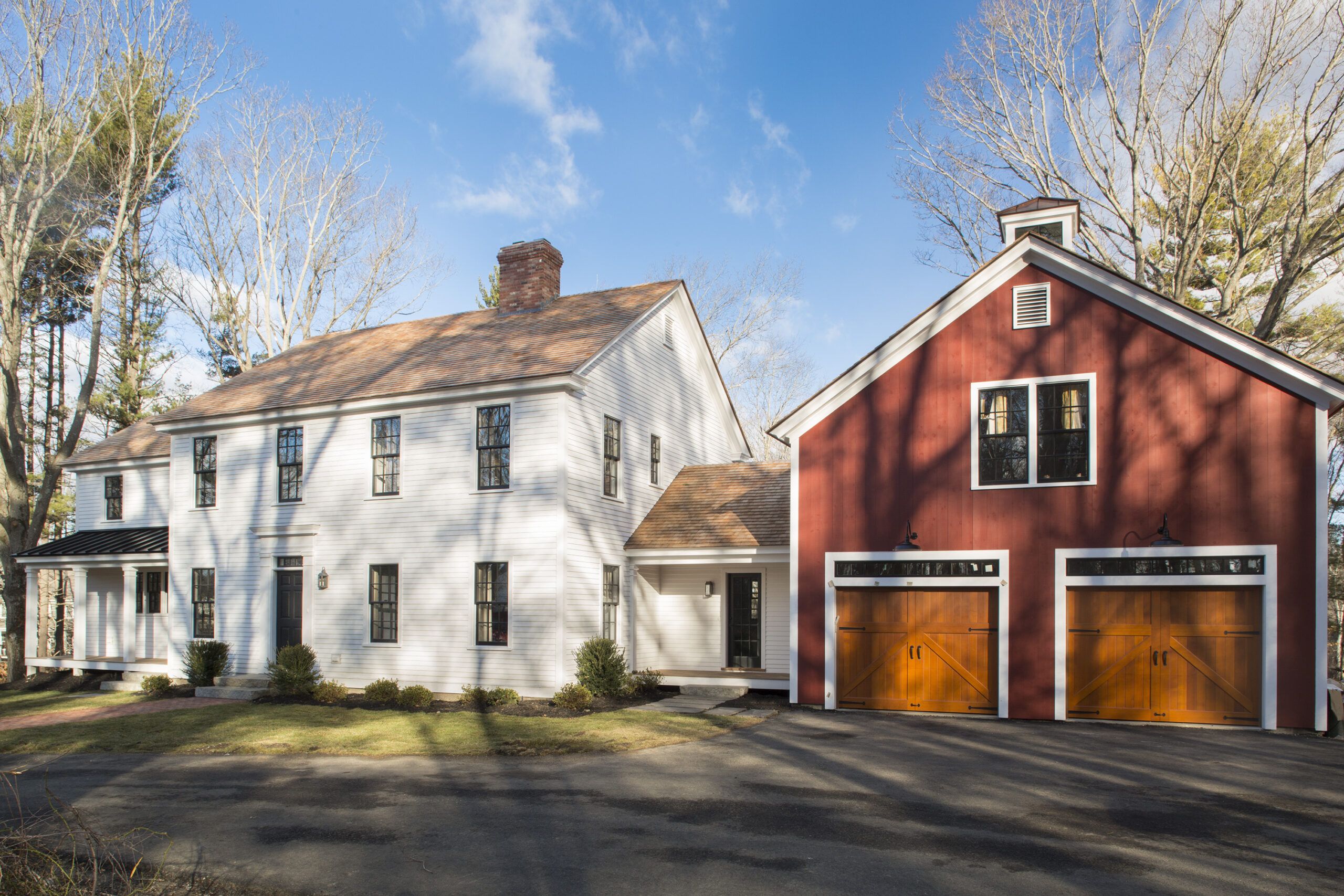For the second half of the 2015–2016 season, This Old House TV will follow a young couple as they create their dream home—not by renovating an old structure, but by choosing a 19th-century-style farmhouse from a catalog. It all starts when urban dwellers April and Bill Harb grow tired of the lack of space and privacy in their Boston-area condo and turn their attention to the suburbs. They love the look of old farmhouses, but having both grown up in new houses, they share a desire for a house with new amenities. “We want something unique, special, with architectural detail,” says Bill. Adds April: “But we are turned off by the lack of character of most new homes.”
The TOH TV crew will join the scene after the Harbs have made a few key decisions. Realizing that buying a thoroughly renovated old house wasn’t in their price range, the couple purchased a four-acre wooded lot in Essex, Massachusetts, that offers all the privacy and beauty they want. Their plan was to hire an architect and a contractor to build a new house with the richly detailed elements of an older home, but they found out quickly that path was also too pricey.
As the show enters the picture, the Harbs have two big pieces of news: They’re expecting their first child, and they’ve found a period-style house loaded with the details they love that won’t blow their budget. It’s a house from Connor Homes, a company in Middlebury, Vermont, that specializes in a type of mill-built reproduction home-building process called panelization.
The Harbs will work directly with the company’s president, Mike Connor, to customize one of the 70 house designs in the Connor Homes catalog—each of which features the scale, proportions, and details of a traditional American architectural style such as Federal, Greek Revival, Georgian, or Shingle.
Homing in on a Federal-style farmhouse plan called the Sarah Taylor, the Harbs will evaluate the two-story, four-bedroom layout and ask for customizations to accommodate their desire for an open living-dining-kitchen area in keeping with their love of entertaining. They also think they may want to opt for a larger master suite in lieu of a fourth bedroom on the second floor, knowing they can add a guest suite above the barn-style garage from the Connor Homes catalog.
Once the design is settled, the Harb house will be made at the Vermont factory, and the pieces—wall panels, windows, doors, joists, roofing—will be bundled, stacked, and shipped to the Essex site.
The Harbs will hire local contractor Erik Kaminski to handle excavating the site, pouring the foundation, receiving the truckloads of house parts, and putting them together. “It’s like assembling a giant puzzle,” notes Kaminski.
TOH TV host Kevin O’Connor, eager to understand the time-saving and cost-efficiency benefits of a panelized home process, will assist with putting up the panels, roofing, and interior trim, while TOH TV landscape contractor Roger Cook will work with the Harbs’ landscape designer to find ways to add a sense of age to the property by using reclaimed granite blocks for pathways and steps.
TOH TV master carpenter Norm Abram will see firsthand some of the techniques involved in erecting a panelized house, while TOH TV general contractor Tom Silva will get a tour of the 118,000-square-foot Connor Homes factory in Vermont.
For April and Bill, the project will allow them to watch as their dream house unfolds before their eyes, even though it looks like it’s been there for at least a century. And when they step across the threshold with a baby in their arms, they’ll enter a warm home with brand-new amenities, plenty of architectural detail, and their preferred style of vintage industrial furnishings in every room.

